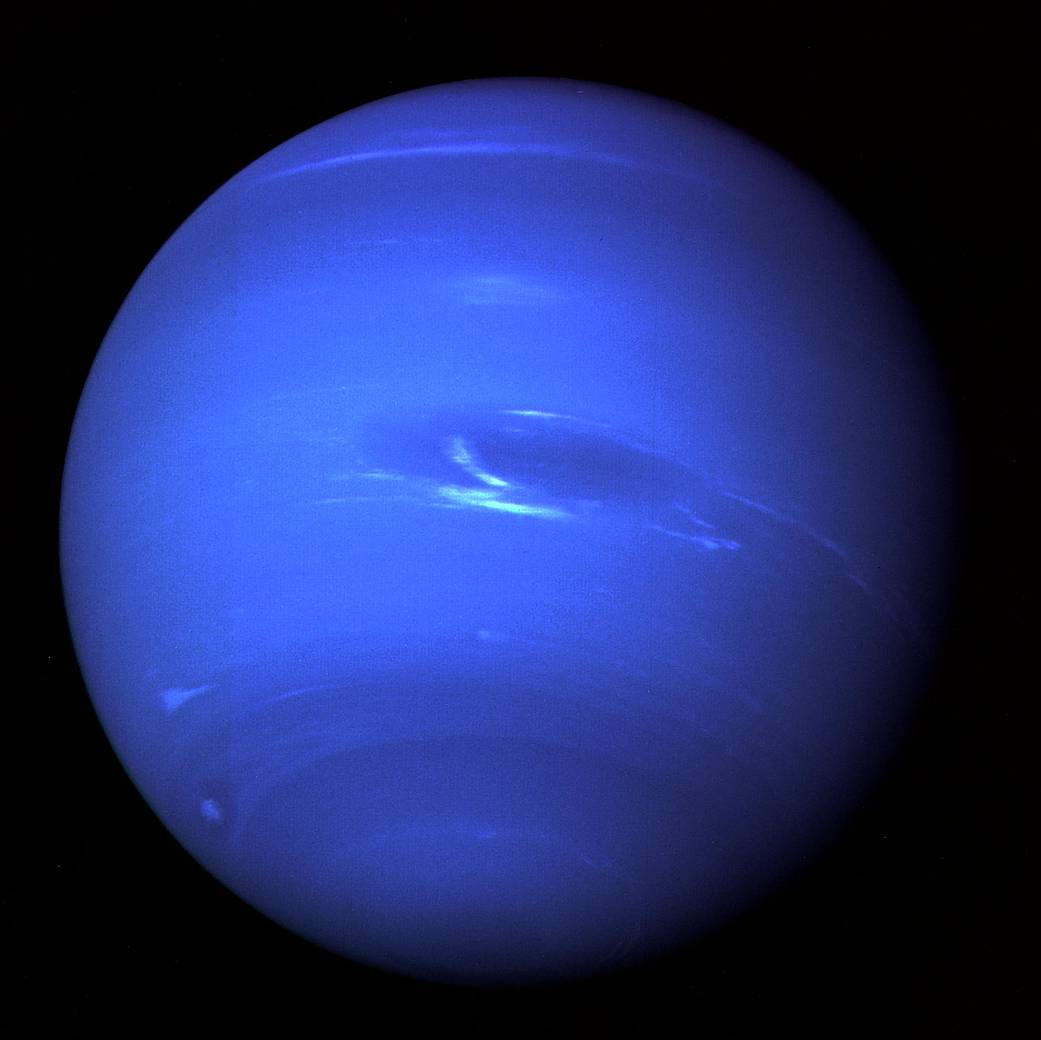发现海王星
On the night 175 years ago on Sept. 23-24, 1846, astronomers discovered Neptune, the eighth planet orbiting our Sun. The discovery was made based on mathematical calculations of its predicted position due to observed perturbations in the orbit of the planet Uranus. The discovery was made using a telescope since Neptune is too faint to be visible to the naked eye, and astronomers soon discovered a moon orbiting the planet. More than a century later, a second moon was discovered orbiting the planet. Our knowledge of distant Neptune greatly increased from the scientific observations made during Voyager 2’s flyby in 1989, including the discovery of five additional moons and confirmation of dark rings orbiting the planet.
在175年前,也就是1846年9月23日至24日的晚上,天文学家发现了海王星,第八颗围绕太阳运行的行星。由于观测到天王星轨道上的扰动,根据对其预测位置的数学计算得出了这一发现。这一发现是通过望远镜发现的,因为海王星太暗了,肉眼无法看到。天文学家很快发现了一颗围绕该行星运行的卫星。一个多世纪后,又发现了一颗围绕这颗行星运行的卫星。1989年“旅行者2号”飞掠海王星期间的科学观测大大增加了我们对遥远的海王星的了解,其中包括发现了另外5颗卫星,并确认了围绕该行星运行的暗环。
This image of Neptune was taken by Voyager 2 less than five days before the probe’s closest approach of the planet on Aug. 25, 1989, and shows the “Great Dark Spot” — a storm in Neptune’s atmosphere — and the bright, light-blue smudge of clouds that accompanies the storm.
这张海王星的照片是由旅行者2号在1989年8月25日最接近这颗行星前不到五天拍摄的,显示了“大黑斑”——海王星大气中的风暴——以及明亮的浅蓝色伴随风暴而来的云团。
Image Credit: NASA/JPL-Caltech
影像来源:NASA/JPL-Caltech

